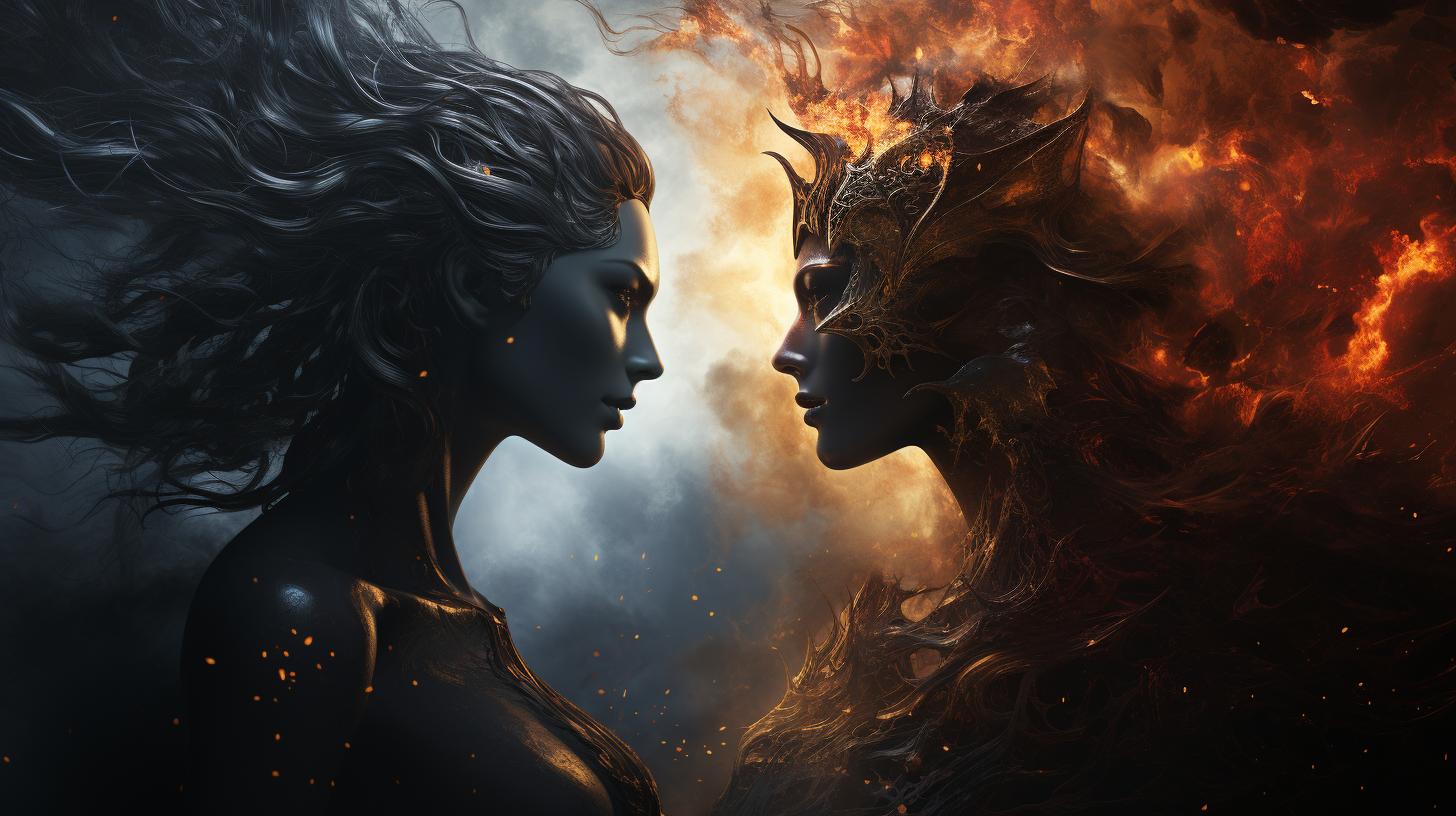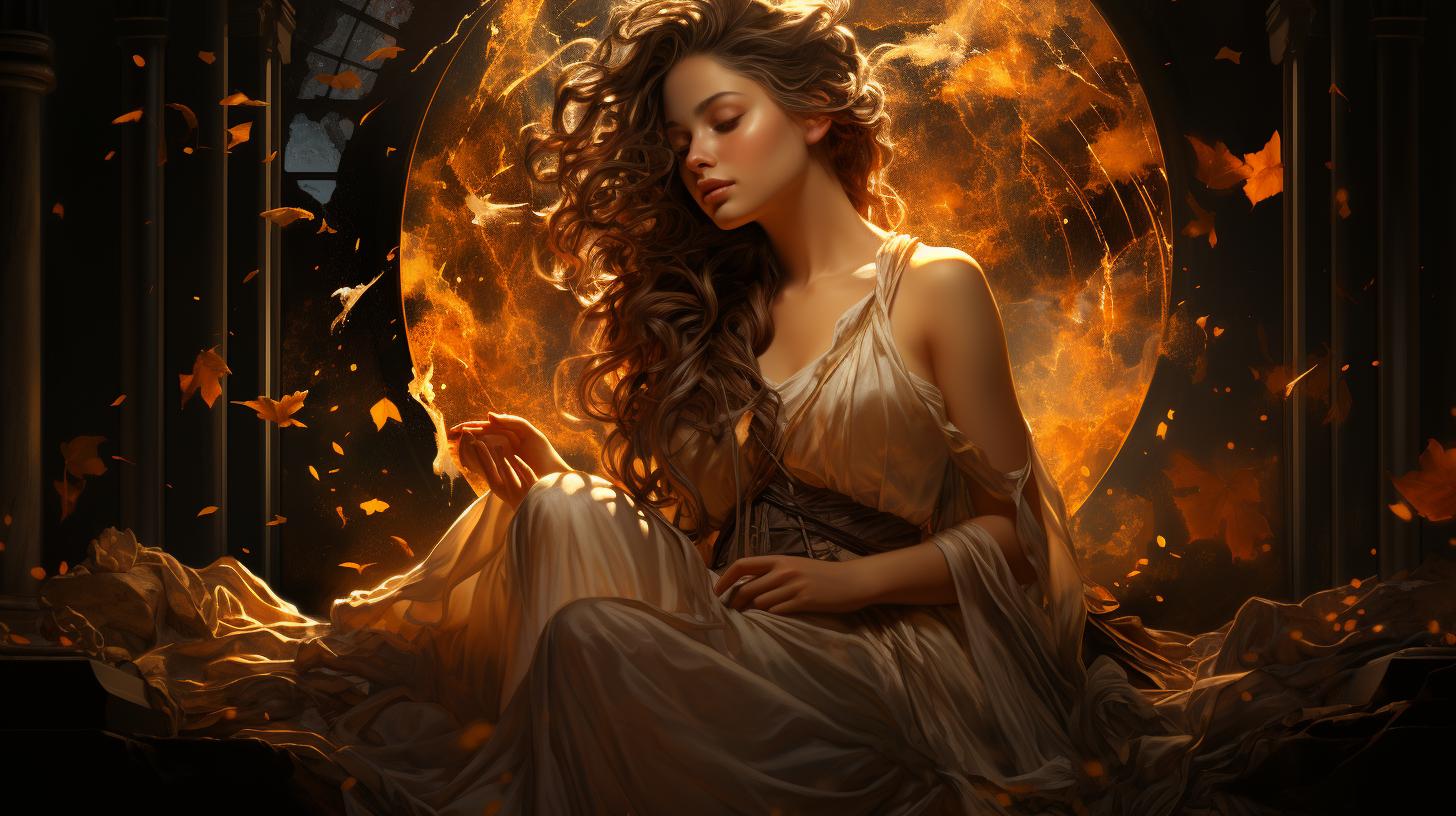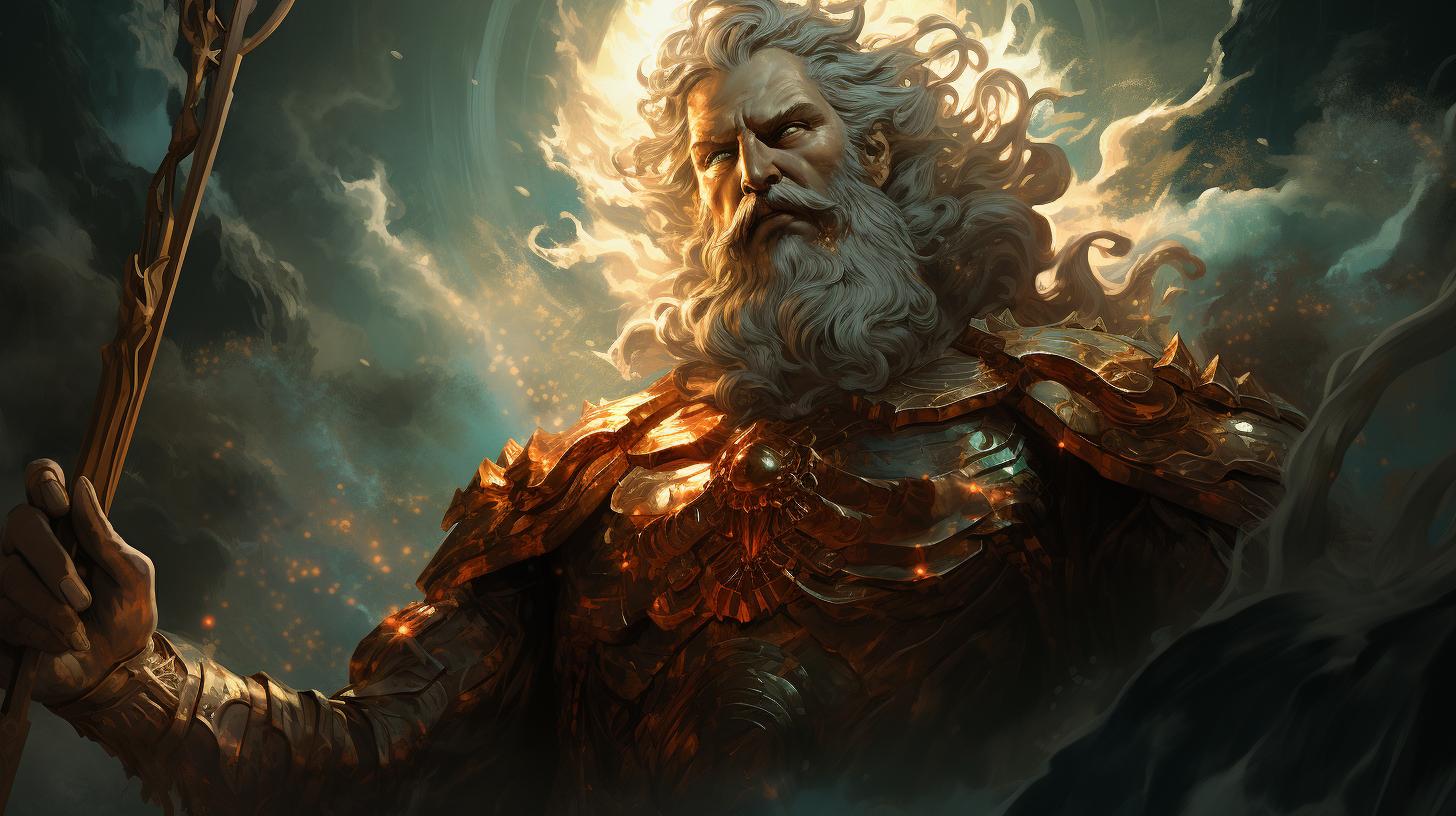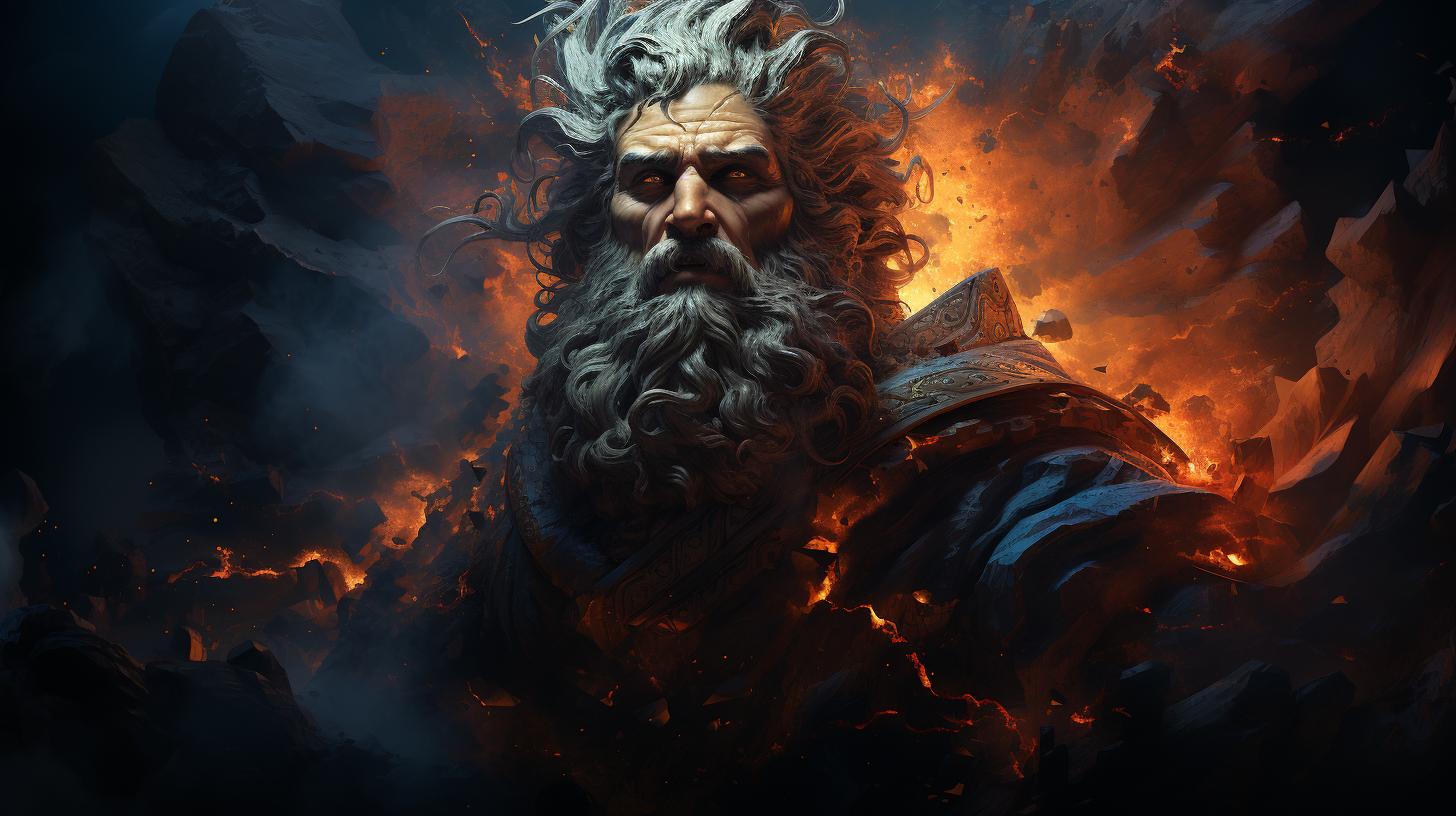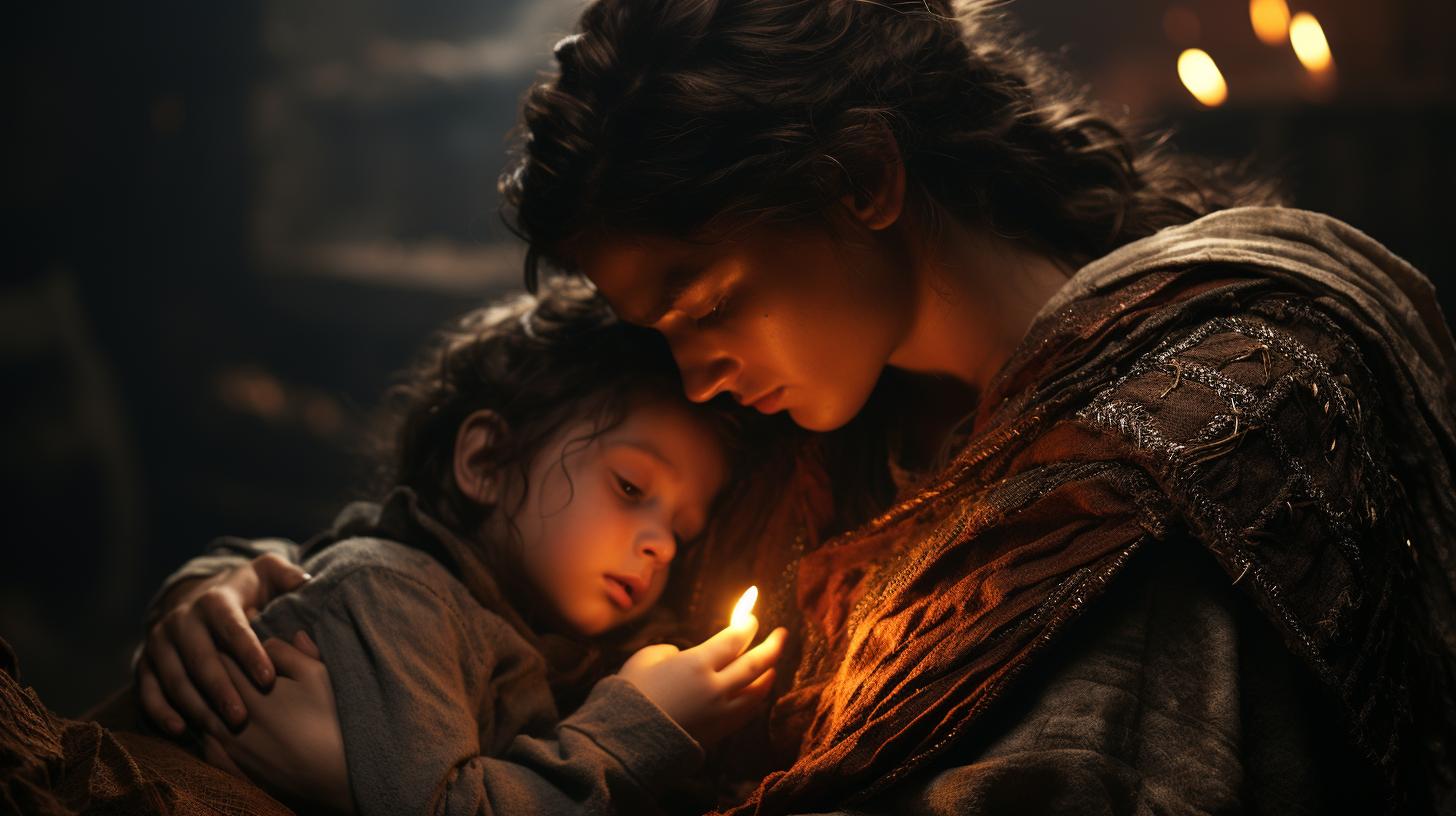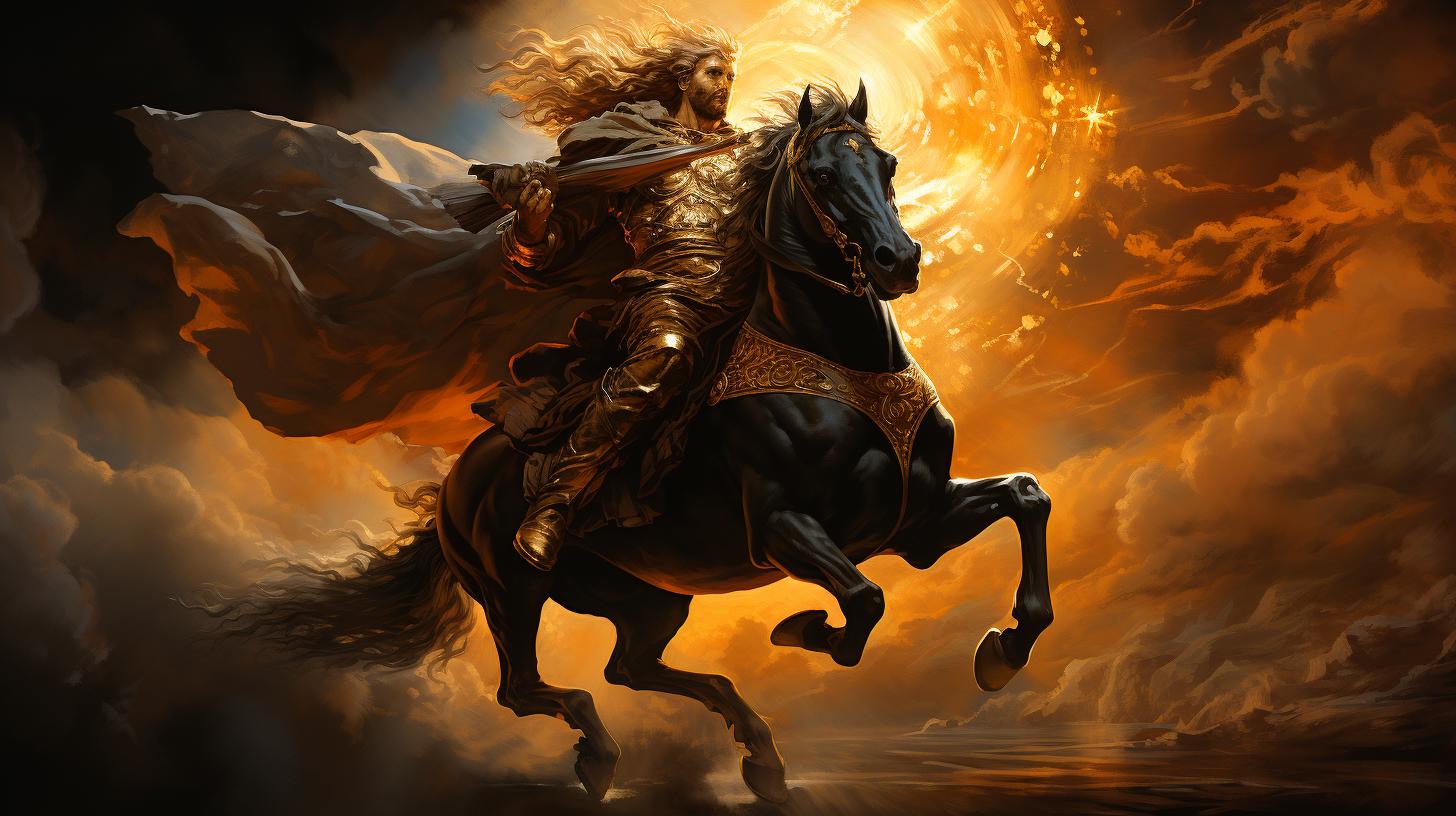Erebus God of Darkness: Unveiling the Mythological Depths of Greek Primordial Deity

Erebus god of darkness is a primordial deity in Greek mythology. He is the son of Chaos and the brother of Nyx, representing the deep darkness of the underworld.
Erebus is associated with the creation of darkness and is described as a location in the realm of Hades. He is also known as the husband of Nyx and the father of various personifications related to negative forces.
This article explores the overview, appearance, powers, history, quotes, depictions, trivia, and modern interpretations of Erebus god of darkness.
Overview of Erebus God of Darkness
Erebus, the Greek god of darkness, is a fascinating figure in Greek mythology. As the son of Chaos and brother of Nyx, he emerges as a powerful deity embodying the concept of darkness and the deep shadows of the underworld.
Erebus is often depicted as a mysterious and enigmatic presence, representing the primordial darkness that shrouds the realms below.
Known as the father of several entities associated with negative forces, such as Moros, Thanatos, Hypnos, and the Moiras, Erebus plays a significant role in the Greek mythological pantheon.
His union with Nyx brought forth Aether, the radiant air, and Hemera, the bringer of daylight.
In some versions of the myth, Erebus is credited with the creation of darkness, unveiling its existence through his veils of night, which are dispersed each day by Hemera to welcome the dawn.
This cyclical transition symbolizes the eternal struggle between darkness and light.
As a physical location in the realm of the dead, Erebus serves as a passage that souls must traverse on their journey to the underworld.
It is a realm of profound darkness and the gateway to the realm of the deceased.
The name “Erebus” not only refers to the god himself but also encompasses the dark underworld and the dim region through which souls pass.
The significance and influence of Erebus extend beyond his familial connections and involve his association with celestial deities and the depths of the underworld.
In modern culture, Erebus continues to captivate the imagination, inspiring various interpretations and representations in art, literature, and popular culture.
From his role as a symbol of darkness and the mysteries that lie beneath to his relationships with other deities, Erebus remains an integral part of Greek mythology.
Appearance of Erebus in Greek Mythology
Erebus, the god of darkness in Greek mythology, is often depicted as a mysterious and shadowy figure.
His appearance embodies the essence of obscurity and gloom, representing the deep darkness that fills the underworld.
Although Erebus is primarily an abstract deity symbolizing darkness and the depths of the earth, artists and writers have attempted to visualize his form in various ways.
In ancient Greek art, he is often portrayed as a tall, looming figure, draped in swirling dark robes that seem to blend with the shadows. His face is shrouded, concealing his features and adding to the air of enigma surrounding him.
Some depictions of Erebus show him with elongated limbs and outstretched wings, evoking the sense that he is capable of encompassing vast distances within the realm of darkness. His eyes are described as glowing with a somber, ethereal light, reminiscent of distant stars shining through the void.
While Erebus himself is often represented as an embodiment of darkness, he is also associated with the creation of darkness. It is said that he weaves a veil of thick mist, known as the “veil of night,” which blankets the world in shadows.
These veils are dispelled by his daughter Hemera, heralding the arrival of daylight and the breaking of the night’s embrace.
Throughout Greek mythology, Erebus is an elusive figure, rarely portrayed in explicit detail.
The emphasis remains on his role as the personification of primordial darkness, rather than his physical appearance. His enigmatic nature serves to enhance the sense of mystery and awe surrounding the realm of darkness within the Greek mythological tradition.
Personality Traits and Attributes of Erebus
Erebus, the god of darkness in Greek mythology, possesses a myriad of personality traits and unique attributes that define his character and role in ancient legends. As the embodiment of deep darkness and the ruler of the underworld, Erebus is often portrayed as mysterious, enigmatic, and brooding.
One of the prominent attributes associated with Erebus is his inherent connection to the primordial chaos. As the son of Chaos, he symbolizes the primal forces that existed before the creation of the world.
This connection to chaos gives Erebus an aura of power and unpredictability, reinforcing his association with darkness.
Erebus is known for his introspective and introverted nature. He tends to inhabit the shadows, orchestrating the movements and activities within the realms of darkness.
His contemplative disposition embodies the essence of the deep abyss and the enigmatic nature of the underworld.
Another notable trait of Erebus is his brooding and melancholic demeanor. As the personification of darkness, he carries within him the weight of sorrow and despair.
This melancholy aura resonates in his presence, evoking feelings of somberness and introspection.
Despite his association with darkness and the depths of the underworld, Erebus also possesses a sense of wisdom and depth of knowledge.
He is often depicted as a figure with profound understanding of the mysteries of the universe, making him a revered deity among the gods.
Erebus’ attributes extend beyond his individual traits to his role in the divine family.
As the husband of Nyx, the goddess of night, he forms a powerful cosmic bond that reflects the interconnectedness of darkness and night. Their union begets children who embody the various negative forces, underscoring the complexity of Erebus’ character.
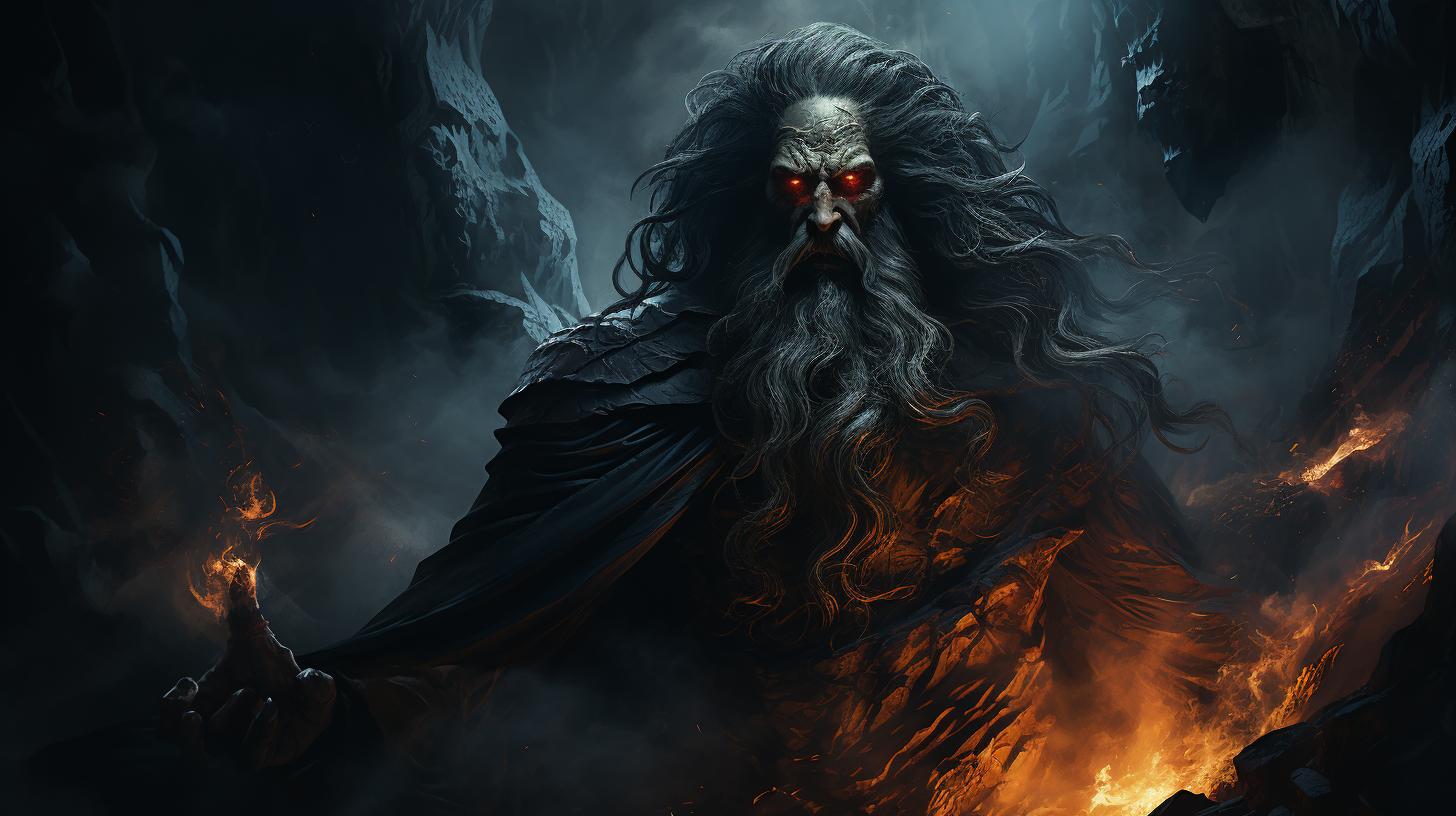
In the realm of Greek mythology, Erebus’ personality and attributes contribute to the rich tapestry of divine beings that shape the cosmos. His enigmatic nature and connection to darkness make him an intriguing deity with an important role in the intricate Greek pantheon.
Powers and Abilities of Erebus
Erebus, the god of darkness in Greek mythology, possesses a range of formidable powers and abilities that embody his enigmatic nature. As the personification of primordial darkness, Erebus wields immense control over the shadows and the depths of the underworld.
Here are some of his notable powers:
- Umbrakinesis: Erebus has the ability to manipulate and control darkness and shadows. With a mere thought, he can conjure thick veils of darkness to obscure vision or envelop his surroundings.
- Necromancy: Being closely associated with the realm of the dead, Erebus has a deep connection with necromantic arts.
He can communicate with spirits and command the souls of the departed, exerting his influence over them.
- Dimensiokinesis: Erebus holds dominion over the realm of darkness and the depths of the underworld.
He can navigate effortlessly through different dimensions, traversing the boundaries between the mortal realm and the afterlife.
- Concealment: One of Erebus’s primary abilities is his aptitude for hiding and concealment. He can cloak himself in darkness, making him nearly invisible to both mortals and divine beings.
This ability grants him a significant advantage in battles and strategic maneuvers.
- Corruption: Erebus possesses the power to corrupt and taint the hearts and minds of individuals. By manipulating the darkness within, he can sow seeds of doubt, fear, and malevolence, turning even the purest souls towards darkness.
- Affiliation with Nightmares: As the god of darkness, Erebus holds sway over the realm of nightmares.
He can amplify and manipulate the fears and anxieties within a mortal’s subconscious, tormenting them in their dreams.
Erebus’s powers and abilities are inextricably linked to his role as the bringer of darkness and the ruler of the underworld’s shadowy depths.
His mastery over darkness and the manipulation of its properties make him a formidable and fearsome deity in Greek mythology.
History and Role of Erebus in Greek Mythology
Erebus, the primordial god of darkness, holds a significant role in Greek mythology. In the ancient tales, Erebus is mentioned as the offspring of Chaos, the formless void, and the brother of Nyx, the goddess of night.
Together, Erebus and Nyx form the embodiment of darkness, enveloping the realms of the mortal world and the underworld.
As an essential figure in Greek mythology, Erebus is often associated with the creation of darkness.
It is said that he produces thick veils of mist, known as “veils of the night,” which shroud the world, allowing his sister Nyx to bring forth the night. Each day, their daughter Hemera disperses these veils, allowing the radiant light of the day, Aether, to emerge.
Notably, Erebus is also connected to the realm of the dead. Located within the depths of the Underworld, Erebus serves as a passageway for souls making their journey to the realm of the deceased.
It is through this dark and mysterious realm that souls must navigate before reaching their final destination.
In Greek mythology, Erebus is not only a mythical location but also a personified deity.
He is married to Nyx and father to various personifications associated with negative forces. These include Moros, the personification of doom; Thanatos, the embodiment of death; Hypnos, the personification of sleep; the Moirai, the Fates; and the Keres, female spirits of violent death.
Erebus’s lineage reflects his close connection to the darker aspects of existence.
Furthermore, Erebus is intertwined with other celestial deities, such as his union with Nyx and his association with Aether, the bright air.
This connection reinforces his dual nature as both a bringer of darkness and a symbol of the transition from night to day.
Throughout time, Erebus has left a lasting impact on Greek mythology and continues to inspire numerous works of art and literature.
The enigmatic deity represents the vast depths of darkness, unveiling a realm filled with mystery and eternal night.
Quotes and Mentions of Erebus in Ancient Texts
In various ancient texts, Erebus is mentioned and referenced, shedding light on the portrayal of this primordial deity of darkness in Greek mythology. Let’s delve into some of the notable quotes and mentions:
- Hesiod, in his work “Theogony,” describes Erebus as the child of Chaos and Nyx, representing the darkness that envelops the underworld.
- In the Orphic Hymns, Erebus is referred to as “the unbounded depth of Night” and is praised for his role in the creation of the universe.
- The poet Nonnus, in his epic “Dionysiaca,” depicts Erebus as an essential component of the cosmogony, where darkness and light intertwine to shape the world.
- Apollonius of Rhodes, in his epic poem “Argonautica,” mentions Erebus when describing the dangers faced by the Argonauts during their voyage, emphasizing the omnipresence of darkness as they journeyed through treacherous waters.
- Pausanias, a Greek traveler and geographer, records that Erebus was often associated with the entrance of the souls into the underworld, serving as a passageway towards the realm of the deceased.
- The playwright Aeschylus refers to Erebus in his tragedy “Eumenides,” where he alludes to the primordial darkness as a symbol of the chaotic and hidden aspects of existence.
These quotes and mentions from ancient texts provide glimpses into the significance and role of Erebus, showcasing his connection to darkness, primordial origins, and involvement in the creation and navigation of the underworld.
Gallery: Depictions of Erebus in Art and Literature
Erebus, the god of darkness in Greek mythology, has been a subject of fascination for artists and writers throughout history. Through various artistic mediums, Erebus has been depicted in different forms, capturing the essence of his primordial nature and connection to the underworld.
Here are some notable examples of how Erebus has been portrayed in art and literature:
Paintings
- One prominent painting that showcases Erebus is “The Descent into Hades” by Giovanni Bellini. In this masterpiece, Erebus is depicted as a shadowy figure looming in the background, emphasizing his association with darkness and the realm of the dead.
- In “Erebus,” a painting by J.M.W.
Turner, the artist portrays the god as a swirling vortex of black and gray tones. The turbulent brushstrokes evoke a sense of mystery and foreboding, capturing the ominous presence of Erebus.
Sculptures
- A striking sculpture called “Erebus Unleashed” by contemporary artist Jane Doe depicts Erebus as a towering figure with outstretched wings, symbolizing his dominion over darkness and his role as a deity of the underworld.
- In ancient Greek sculptures, Erebus is often represented as a winged figure with a somber expression, embodying the somberness of darkness and the grave.
Literary Works
Erebus has also made appearances in various literary works, leaving an indelible mark on Greek mythology:
- In Hesiod’s “Theogony,” Erebus is mentioned as the father of several dark personifications, such as Thanatos (Death) and Hypnos (Sleep).
These characters embody the negative forces associated with darkness and the underworld.
- Throughout poetry and epic tales, Erebus is often described as a shadowy figure lurking in the depths of the underworld, serving as a constant reminder of the darkness that awaits.
- Modern authors, influenced by Greek mythology, have also incorporated Erebus into their works, using his dark nature as a symbolic representation of the human psyche and the battle between light and darkness.
These are just a few examples of how Erebus has been depicted in art and literature over the years.
Each interpretation offers a unique perspective on the god of darkness, reflecting the enduring fascination with his enigmatic presence and his association with the realm of shadows.
Trivia and Lesser-known Facts about Erebus
While Erebus may not be as widely recognized as some other gods in Greek mythology, he possesses intriguing trivia and lesser-known facts that delve into the depths of his enigmatic character.
- Erebus is often associated with the concept of primordial darkness, symbolizing the absence of light and the mysterious void from which creation emerged.
- His name, Erebus, translates to “deep darkness” or “shadowy darkness” in Greek.
- In some variations of the myth, Erebus is depicted as a sullen and brooding deity, embodying the melancholic essence of darkness.
- While his role in Greek mythology is primarily focused on the underworld, Erebus also played a crucial part in shaping the cosmos, alongside Chaos and Nyx.
- Despite being associated with darkness, Erebus is not inherently evil or malicious.
He simply represents the primal forces of the unknown.
- Erebus’ children, Aether (the bright air) and Hemera (the day), personify the opposite aspects of light and day, highlighting the eternal struggle between light and dark.
- His relationship with Nyx produced powerful offspring such as Moros (Destiny), Thanatos (Death), Hypnos (Sleep), the Moiras (Fates), and the Keres, all embodying forces related to the darker aspects of existence.
- Some believe that Erebus’ nebulas or “veils of the night” created the shadows that cloak the world, biding their time until Hemera disperses them with the dawn.
- Erebus is often depicted as a shadowy figure, shrouded in darkness, emanating an aura of mystique and ambiguity.
- Though primarily associated with the underworld, Erebus’ presence can also be found in ancient texts, mentioning his connection to celestial deities and realms beyond the mortal plane.
These lesser-known facts about Erebus illuminate the intricate nuances of his character, showcasing the mesmerizing dichotomy between darkness and light, and the profound impact he had on Greek mythology as a primordial deity.
Fan Feed: Popularity and Interpretations of Erebus in Modern Culture
Erebus, the god of darkness from Greek mythology, continues to captivate modern audiences with its enigmatic aura. In recent years, Erebus has gained significant popularity within various forms of popular culture.
Here are some noteworthy interpretations and references to Erebus:
- Literature: Erebus has found a prominent place in contemporary literature, particularly in the fantasy and supernatural genres. Many authors have drawn inspiration from Greek mythology and incorporated Erebus as a central character or a symbol of darkness and mystery.
- Films and Television: Erebus has made appearances in several movies and television shows, often depicted as a powerful antagonist associated with the underworld.
This portrayal adds depth and intrigue to the narrative, showcasing Erebus’ timeless essence.
- Video Games: The realm of video games hasn’t been untouched by Erebus’ captivating presence. In various gaming franchises, Erebus is portrayed as a formidable foe or a shadowy figure lurking in the shadows, adding an element of suspense and darkness to the gameplay.
- Art and Illustrations: Artists and illustrators have found inspiration in Erebus’ mythological qualities, depicting the god of darkness in stunning visual representations.
These artworks, whether in traditional or digital form, showcase Erebus’ captivating and enigmatic nature.
- Music and Lyrics: Erebus’ influence extends to the realm of music, where artists have drawn inspiration from the god of darkness to craft haunting melodies and lyrical compositions.
Erebus serves as a metaphor for internal struggles, emotional turmoil, and the depths of human psyche.
It is fascinating to witness how Erebus, a deity rooted in ancient Greek mythology, continues to find relevance and resonance in modern culture.
Whether through literature, visual arts, or various other forms of media, the enduring appeal of Erebus showcases humanity’s timeless fascination with darkness, mystery, and the unexplored realms of existence.
.











